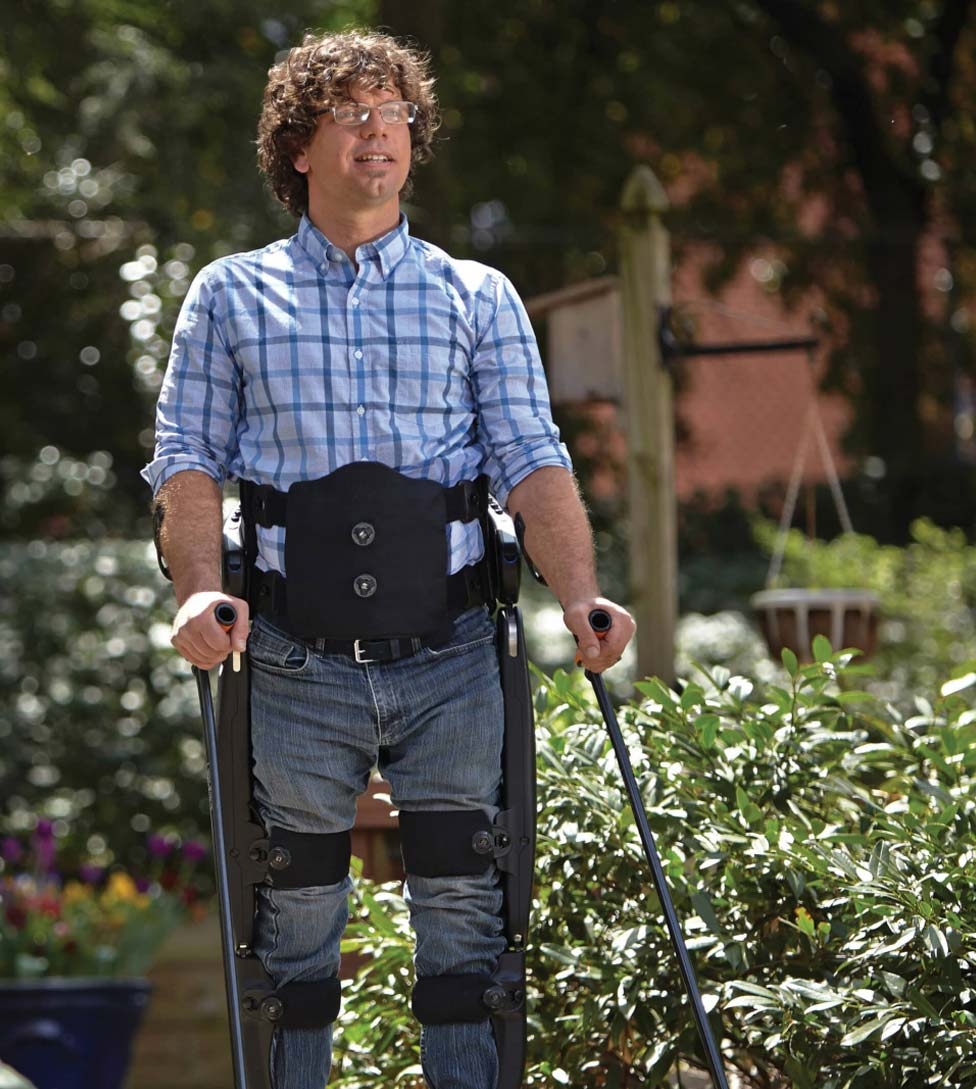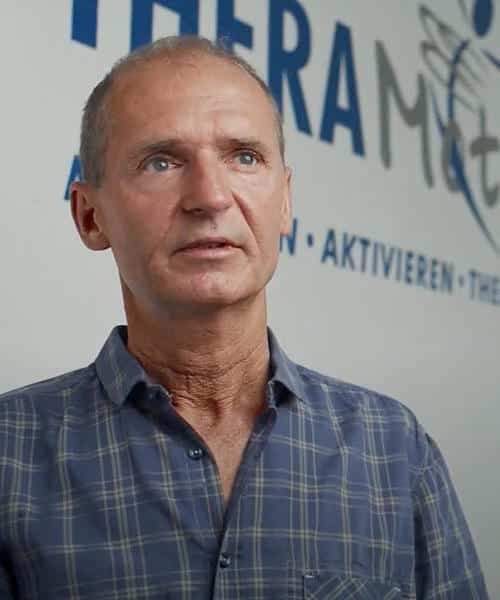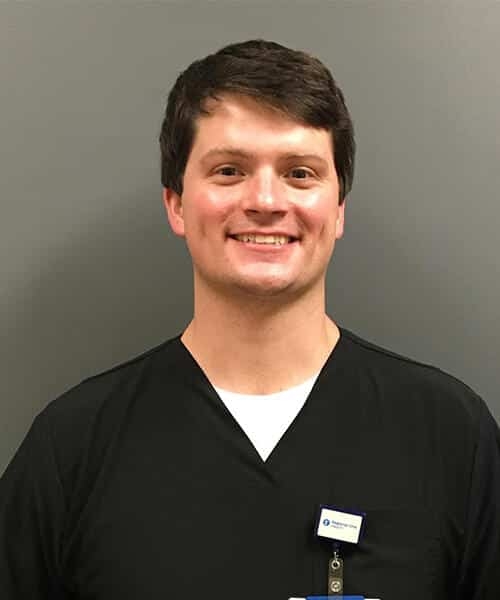Helping thousands of individuals take millions of Ekso-aided steps
At Ekso Bionics, we develop disruptive wearable robotics to take on loss of mobility. In doing so, we have helped thousands of patients with lower extremity disabilities take hundreds of millions of Ekso-aided steps and have inspired an entirely new medical device industry. We are rethinking rehabilitation with assistive technology, and we still have the same goal: helping people reach their full rehabilitation potential.

A brief history of Ekso and health
Our bionic exoskeletons were initially designed for people who have spinal cord injury (SCI) . Many people who have an injury to their spinal cord experience some extent of paralysis or loss of function. In many cases, individuals with paralysis are told that they’ll never walk again, but our medical exoskeletons prove that notion wrong.
EksoNR is also being used to treat people after a stroke, acquired brain injury (ABI), and those with multiple sclerosis (MS). Ekso Indego Therapy is being used to treat people after SCI and stroke. Such patients often suffer lower limb disability and loss of movement, but with the help of wearable exoskeletons, they can begin to mobilize without their wheelchairs, balance with the use of an assistive device, regain sensation and function, and often learn to walk unassisted once again.
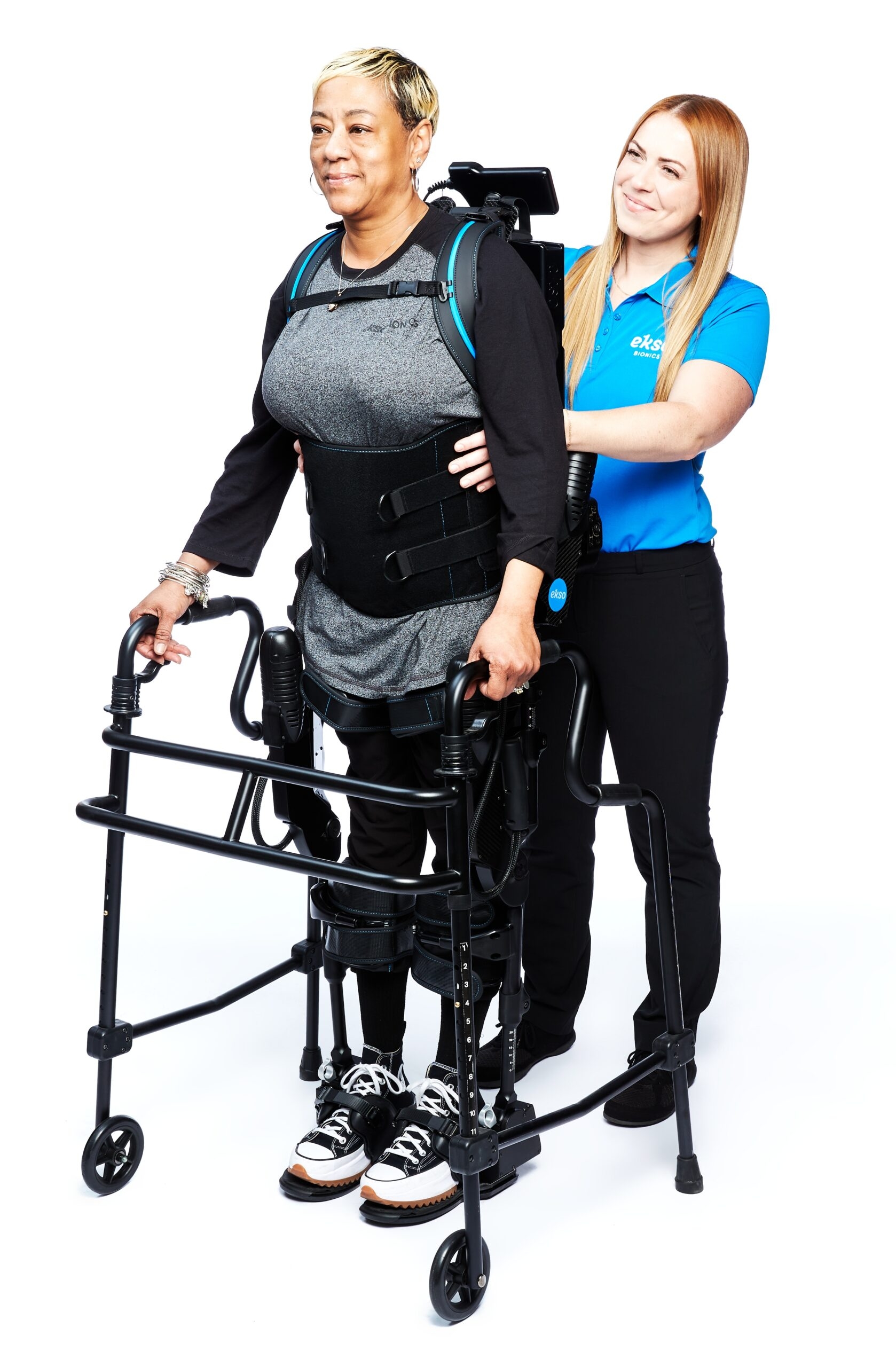
A research backed rehabilitation exoskeleton that helps patients regain mobility
Designed to help patients stand and walk during rehabilitation, EksoNR works with clinicians to give the necessary support to the patient’s trunk and legs, promoting correct movement patterns in all phases of physical rehabilitation and challenging patients as they progress towards walking out of the EksoNR rehabilitation setting and back into their communities.
EksoNR with GaitCoach software is the newest and improved version of our rehab exoskeleton that addresses gait inefficiencies and has become a standard as the first exoskeleton cleared by the US Food and Drug Administration (FDA) for medical applications in treating patients with strokes, brain injuries, SCI and multiple sclerosis (MS).
GaitCoach software, released in late 2023 provides an even better robotic solution for therapists. The integrated GaitCoach provides an extra set of clinical eyes and helps guide therapists to progress patients through their recovery easier and better than ever before. The engineering and clinical teams collaborated to design more intuitive software with improved feedback and real-time data enhancing clinical application and patient engagement.
Learn About EksoNR
EksoNR quick overview
EksoNR is a lower extremity exoskeleton that supports upright posture and teaches the wearer how to walk again and regain a natural gait. Focusing on repetition, neuroplasticity, and intensity, EksoNR automatically detects the patient’s posture and gait and will provide feedback to their therapist to help them improve and make a therapy session more productive.

Benefits
Robotic powered movement can provide total support and trajectory assistance for patients with paralysis of lower limbs or patient-initiated movement can be used to encourage muscle activity in the lower body. Adaptive gait training monitors leg joints and movements to keep patients from compensating and helps them restore their natural gait without discomfort.

Technology
This lower limb exoskeleton even comes with touch screen controls which help clinicians set goals and alter assistance levels for patients of all different functional levels. Physical therapists can also easily access the medical device’s database to analyze complex movement patterns and record patient progress. We constantly explore new technology to continue providing rehabilitative devices in North America and beyond for the benefit of humanity.
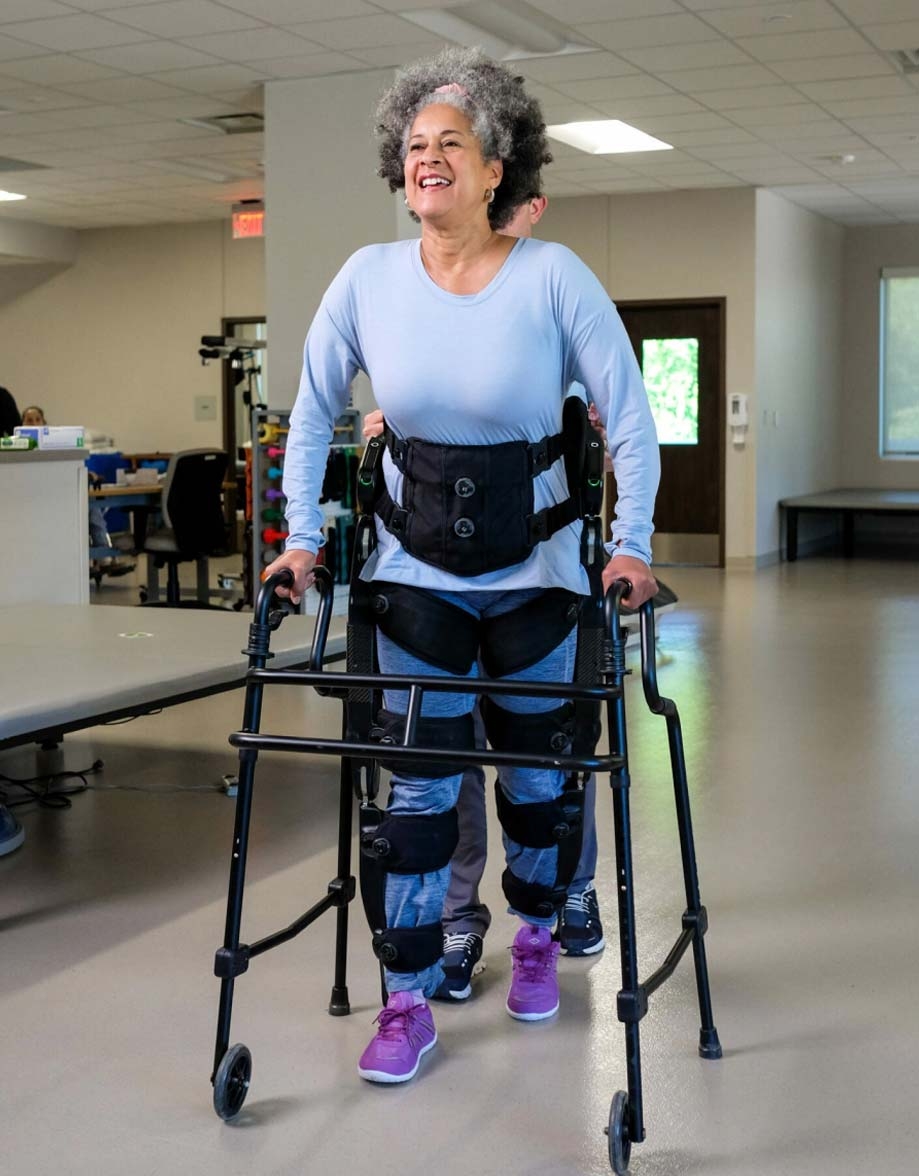
A lightweight rehabilitation exoskeleton that prepares users for use of personal exoskeletons
Ekso Indego Therapy offers clinicians a way to provide individualized gait therapy for patients with spinal cord injury or stroke. Two separate software programs allow for both teaching of a specific robotic assisted gait pattern as well as carry over assessment with this gait pattern removed. The easy-to-use iOS application allows for adjustments of numerous settings and viewing of analytics on patient and device performance that can be used to improve treatment plans.
A modular exoskeleton that provides power to the legs, at home or in the community
Ekso Indego® Personal enables those with spinal cord injury a new level of functional independence and upright mobility in their home and community. With its modular design of five interconnecting components, and only weighing 29lbs, Ekso Indego Personal was designed for ease of use and intuitive operation. It offers easy set up and a quick learning curve with most users standing and walking their first time in the device.
Learn About Ekso Indego Personal